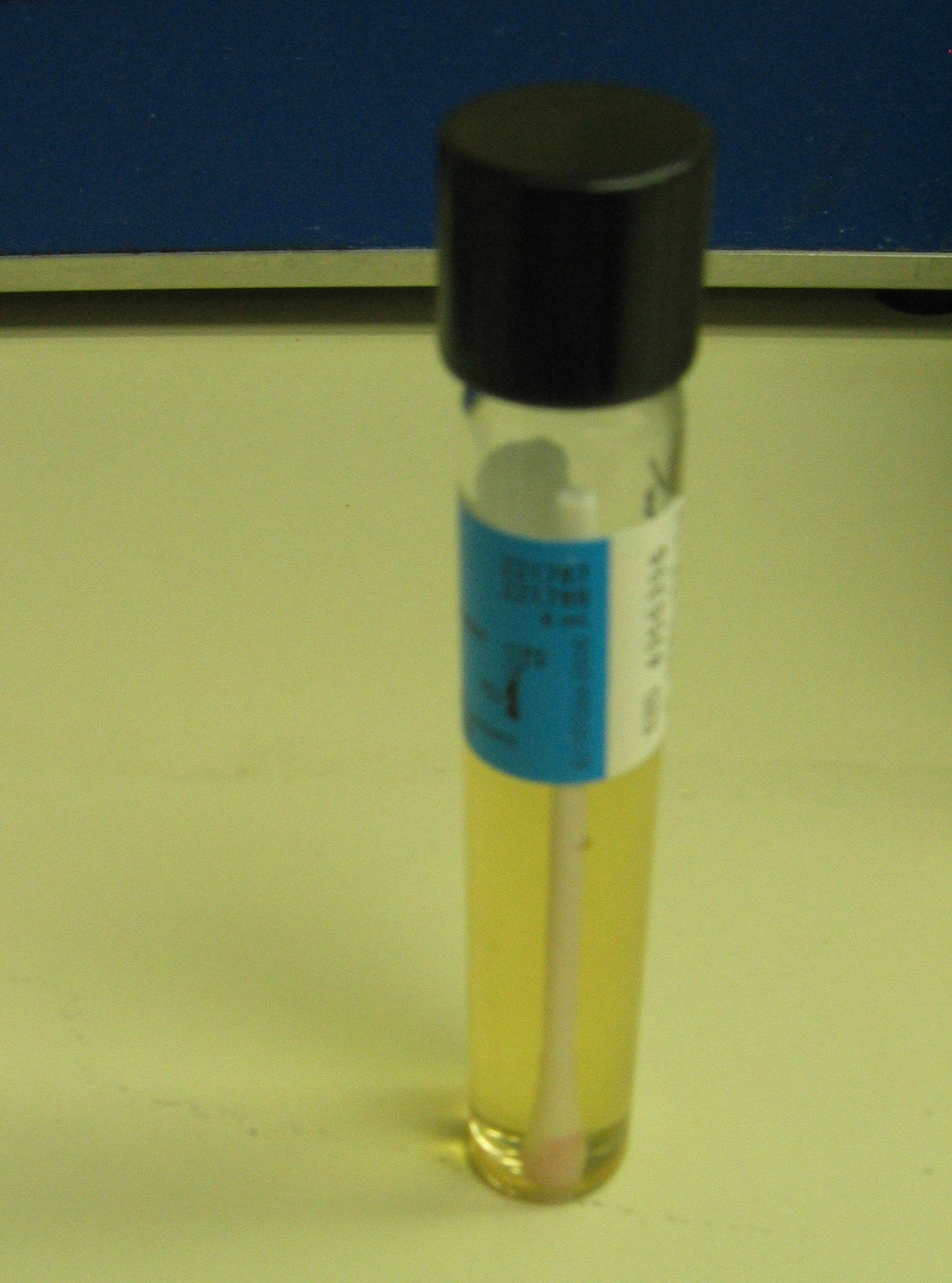Thioglycolate broth on:
[Wikipedia]
[Google]
[Amazon]
Thioglycolate broth is a multipurpose, enrichment, differential medium used primarily to determine the oxygen requirements of microorganisms. Sodium thioglycolate in the medium consumes oxygen and permits the growth of  This allows the differentiation of
This allows the differentiation of
obligate anaerobe
Obligate anaerobes are microorganisms killed by normal atmospheric concentrations of oxygen (20.95% O2). Oxygen tolerance varies between species, with some species capable of surviving in up to 8% oxygen, while others lose viability in environm ...
s. This, combined with the diffusion of oxygen from the top of the broth, produces a range of oxygen concentrations in the medium along its depth. The oxygen concentration at a given level is indicated by a redox-sensitive dye such as resazurine that turns pink in the presence of oxygen.
 This allows the differentiation of
This allows the differentiation of obligate aerobe
An obligate aerobe is an organism that requires oxygen to grow. Through cellular respiration, these organisms use oxygen to metabolise substances, like sugars or fats, to obtain energy. In this type of respiration, oxygen serves as the terminal e ...
s, obligate anaerobe
Obligate anaerobes are microorganisms killed by normal atmospheric concentrations of oxygen (20.95% O2). Oxygen tolerance varies between species, with some species capable of surviving in up to 8% oxygen, while others lose viability in environm ...
s, facultative anaerobes
A facultative anaerobic organism is an organism that makes ATP by aerobic respiration if oxygen is present, but is capable of switching to fermentation if oxygen is absent.
Some examples of facultatively anaerobic bacteria are ''Staphylococcus' ...
, microaerophile
A microaerophile is a microorganism that requires environments containing lower levels of dioxygen than that are present in the atmosphere (i.e. < 21% O2; typically 2–10% O2) for optimal growth. A more re ...
s, and aerotolerant organisms. For example, obligately anaerobic ''Clostridium
''Clostridium'' is a genus of anaerobic, Gram-positive bacteria. Species of ''Clostridium'' inhabit soils and the intestinal tract of animals, including humans. This genus includes several significant human pathogens, including the causative ...
'' species will be seen growing only in the bottom of the test tube.
Thioglycolate broth is also used to recruit macrophages to the peritoneal cavity
The peritoneal cavity is a potential space between the parietal peritoneum (the peritoneum that surrounds the abdominal wall) and visceral peritoneum (the peritoneum that surrounds the internal organs). The parietal and visceral peritonea are lay ...
of mice when injected intraperitoneally. It recruits numerous macrophages, but does not activate them.
References